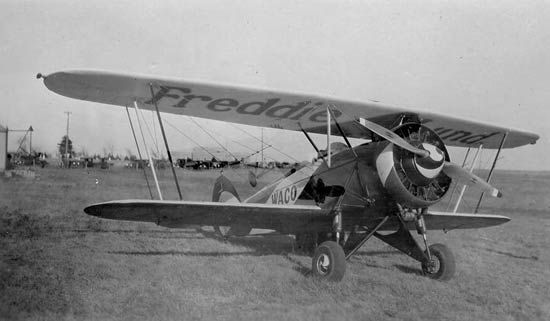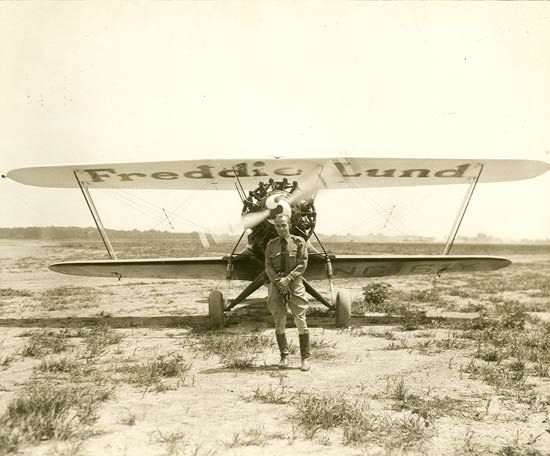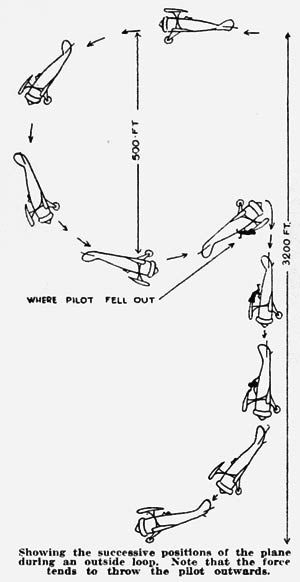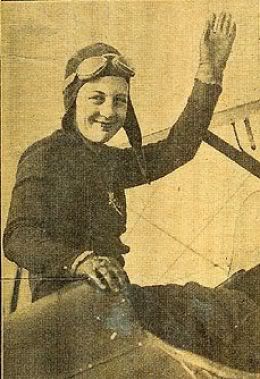Over and Over Again
by Bettie Elkins Lund (September, 1930)
(Reader of Science and Invention Tells How She Accomplished 67 Barrel Rolls in 28 Minutes, Breaking Women's Record)
Prior to this record-breaking flight in Miami (my fourth solo), I had only 20 minutes to my credit in the air, alone, and I had never performed any stunts. But my husband, Freddie Lund, was the first pilot to perform an outside loop in a commercial airplane, and he had taught me to fly, and taken me around. So, I felt quite confident.
We had agreed to his signaling me from the ground, so that I could know how many rolls I had made. For each of my first twenty he was to lay a long, white strip of muslin on the ground; he was to cross one of these strips with another for every ten succeeding rolls.
I buckled into my parachute, kissed my husband good-bye, listened to his last- minute instructions, climbed into the cockpit and taxied down the field, waving to my husband; Mr. Lou Souvere, the official representative of the National Aeronautic Association; Young Stribling, the boxer (who is also a pilot); and the crowd of spectators. For a while I held the plane low as I took off straight into the wind, and waved once more to those below me. Then I quickly climbed for altitude.
All the while I kept thinking of the things I had been told to do, and those I had been warned against doing. I wondered if I would be frightened when I started doing stunts, and what I would do if I were afraid! But the time passed quickly, and after consulting my altimeter, I decided to start barrel rolling. I made sure everything was all right, pushed into a corner of the cockpit, and went into my first barrel roll. I had to watch carefully to come out straight. But after it was over I knew there was nothing to be scared about and did thirteen in rapid succession. By that time I had lost considerable altitude, and had to climb a bit before doing any more of my stunts. Then I did twenty-one without stopping to gain altitude.
While climbing a second time I looked down to see if I could discern the markers on the ground. They were very plain, and a completed cross told me I had done at least thirty rolls. Then I did thirty-two more, one after the other.
My sixty-seventh roll was not perfect, so I thought I'd call it a day.It was better to stop now than do something wrong and be sorry later. At 1,500 feet, directly over the airport, I cut my motor and glided, in two complete circles, to a landing. This is required in taking a test for a pilot's license, and, as I had done it many times with Mr. Lund, I felt sure I could do it myself.
When I landed, I taxied back to the hangar where the boys were waiting to congratulate me. My husband gave a sigh of relief, for although he was confident I'd come through all right, he couldn't help worrying while I was so high up, all by myself.




